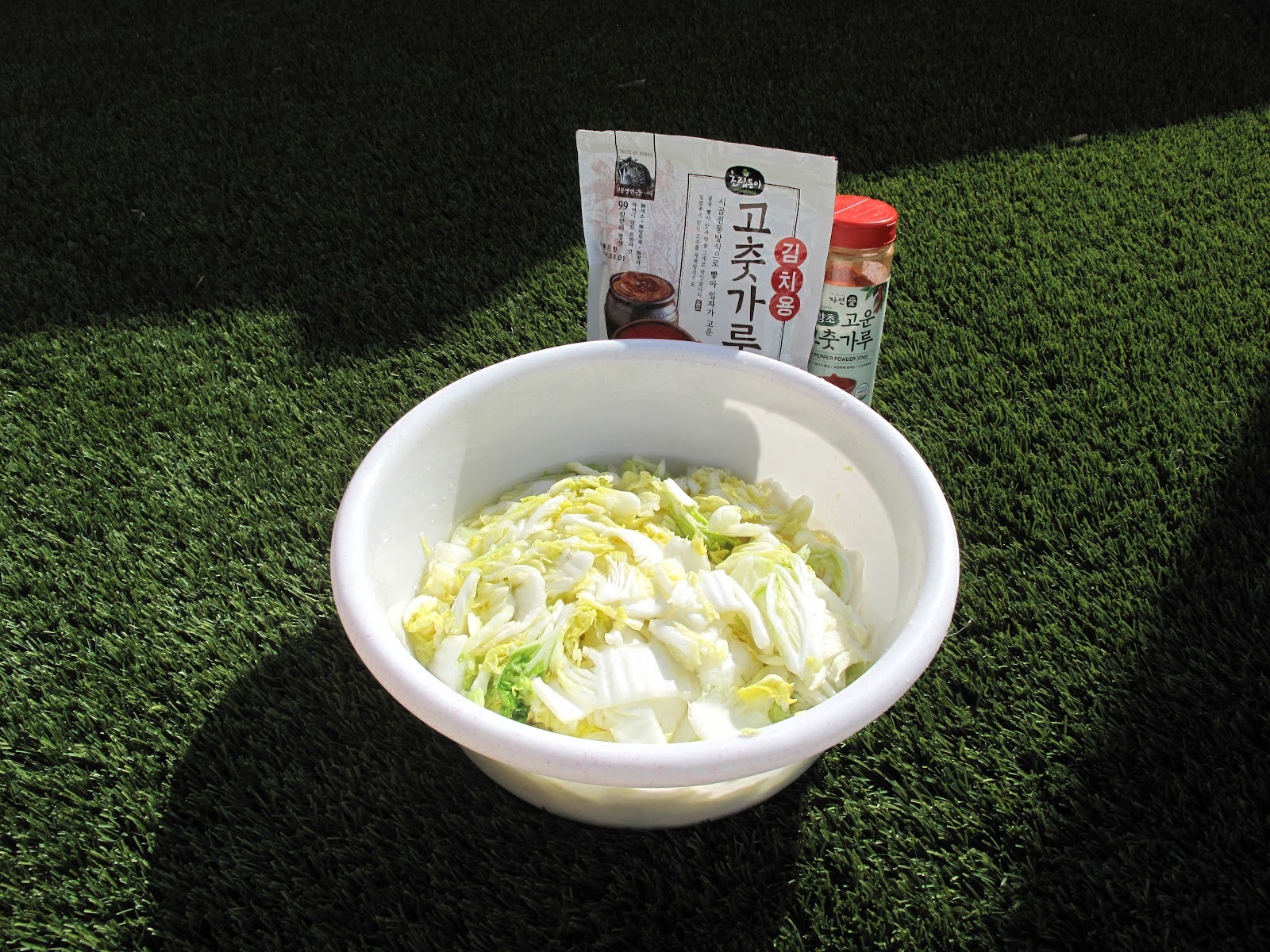When I think of love, I think of kimchi. Flavors that seem far too bold for company meld together into a perfect mixture of fermented beauty. A long-lasting batch is cultivated with time, patience, and care. Each vegetable is finely hand-chopped and no cabbage leaf is left unmarinated. The fresh ingredients ripen and bubble over time in a microbial process akin to pickling, marrying to create a burst of umami and spice that electrifies the senses.
Sourness emanates from a jar atop the countertop, holding within it the wonders of science, garlic, napa cabbage, onion, probiotics, and centuries of ancient craftsmanship. The pungent scent transports me to the kitchen of my childhood home, where my grandma’s hand would reach down to feed me the first taste of her newest robust concoction. I think of her when I’m in the Asian supermarket, as I stand in front of a pile of cabbages, carefully inspecting their bumps and bruises with her same attention to detail, or when I wear plastic gloves to protect my manicured nails from the redness of the gochugaru pepper. As I craft and share my kimchi with those around me, I feel her love.
I began to mix my own special blend of kimchi during this past holiday season. Searching for a gift that would be thoughtful, handcrafted, and wholly unique, I became inspired by the slew of kimchi-making TikTok videos surfacing to internet virality. Spirited by the fractioned yet mighty force of my Korean ancestry, I took to the kitchen.
It was there that I discovered what it truly meant to make a batch of kimchi from start to finish. It’s no easy feat, but it’s a labor of love. You may be asking, “Why go through all the trouble when you can buy it from the store?” For me, the kimchi process is far more than a means to an end. Taking the time to prepare the ingredients by hand means connecting with family and culture. The practice of kimjang, a community kimchi preparation event held seasonally in Korea, proves kimchi’s power to transcend its place as a side dish. Just as its bacterial properties come to life during fermentation, its traditions are more alive than ever.
So if you’re looking to take a break from midterms, experiment with new flavors, or find solace amidst an endless history of kimchi-makers, feel free to try out the below recipe for yourself. Collected from a variety of internet sources (mainly Maangchi.com), this method has been modified according to my own preferences and many instances of trial and error.
If you’re still hesitant, consider that life is like a jar of kimchi. It could seem stinky, but crack it open, and you never know what flavorful splendor awaits.
Ingredients
Vegetables:
1 large napa cabbage
1 carrot
1 daikon radish
1 green onion
1 Asian pear
1 white onion
1-2 inch piece of ginger
6 cloves of garlic
Seasonings:
2 cups coarse gochugaru (Korean red pepper flakes)
¼ cup saeujeot (fermented and salted shrimp)
1 cup Kosher salt
Porridge:
2 cups water
2 tablespoons Mochiko sweet rice flour
2 tablespoons brown sugar
Directions
- Cut cabbage at the base and tear in half. Cut into square pieces and place into a large bowl.
- Create a salt water mixture to pour over cabbage. Sprinkle a generous handful of salt over the cabbage as it soaks.
- Let cabbage soak for 4-6 hours, turning the leaves every hour.
- Create porridge mixture by heating the water and rice flour on the stove until it thickens, stirring to avoid clumps. Turn off heat and stir in sugar. Transfer to a bowl and let cool in the fridge.
- Add roughly chopped onion, garlic, ginger, fermented shrimp, and Asian pear to a blender. Blend until smooth.
- Combine the blended mixture, red pepper flakes, and porridge. Rinse the salt from the cabbage and pat dry. Pour the mixture over the cabbage.
- Add thinly chopped carrot, daikon radish, and green onions into the mixture with the paste.
- Transfer the mixture into an airtight jar or plastic container. Leave on the counter to ferment at room temperature for up to two days, then store in the fridge.
- Enjoy your kimchi!










Kayla • Dec 29, 2024 at 3:38 pm
This recipe looks great! I am wondering if you have ever made kimchi with a group of people and if so, do you need to change the recipe for large batches?